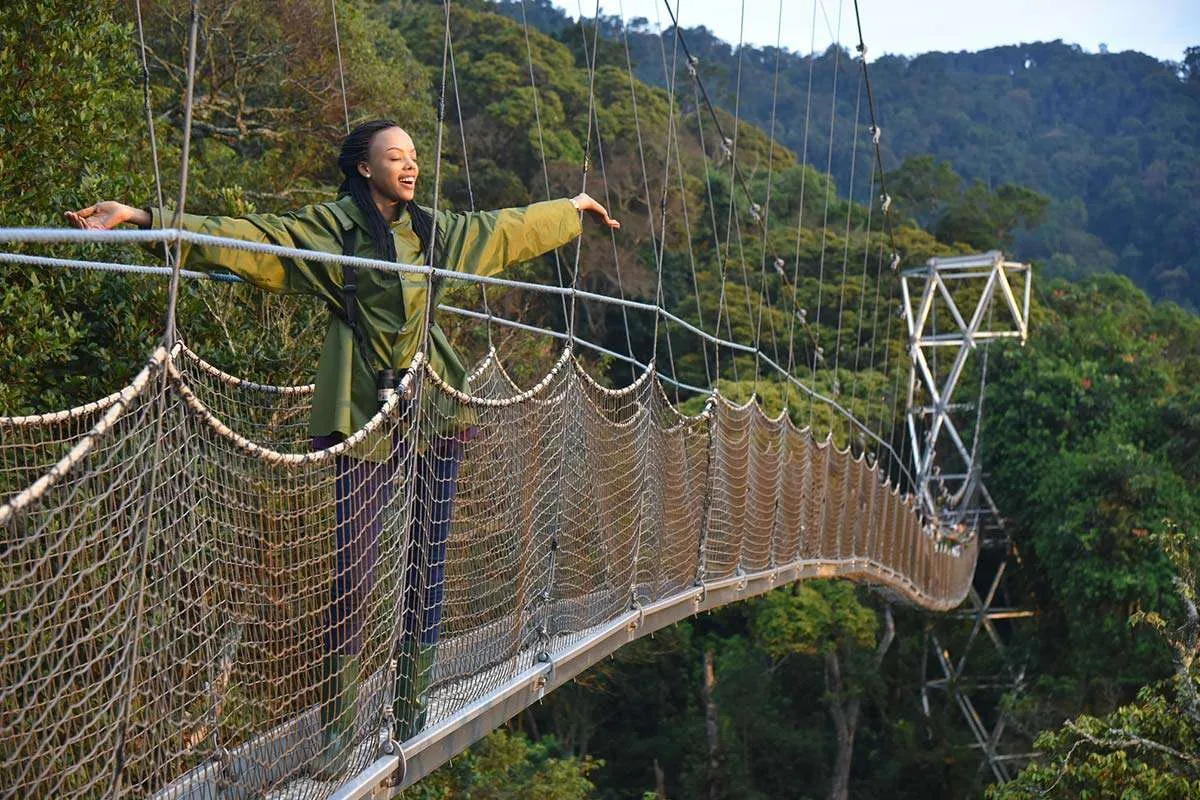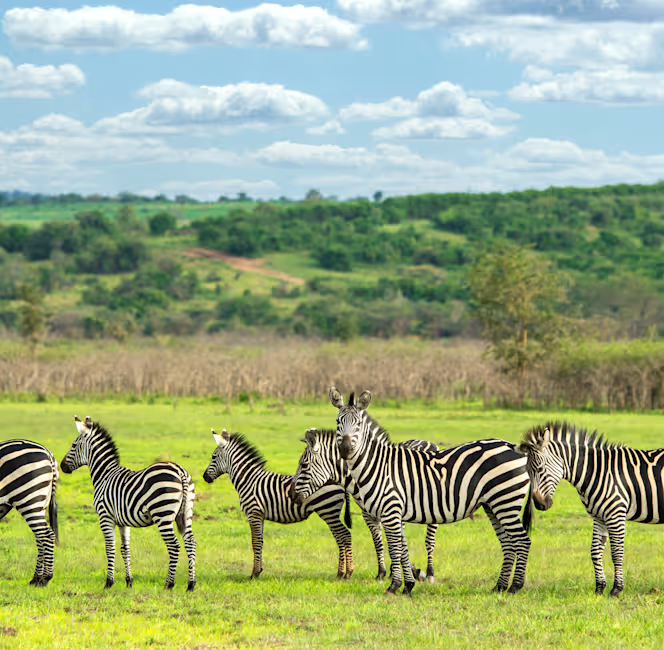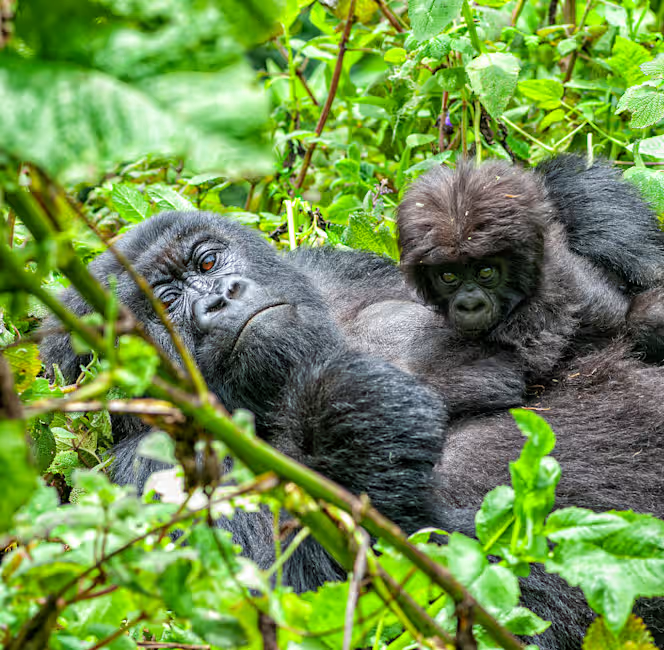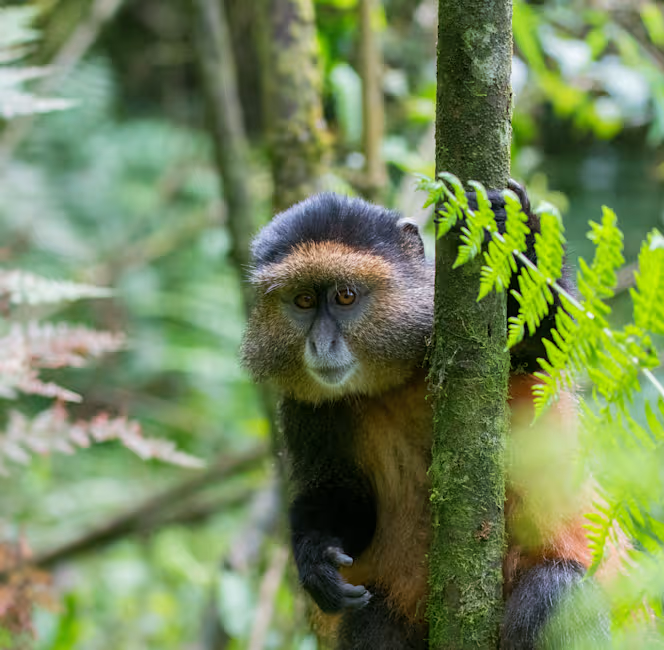Overview
Volcanoes National Park, located in northwestern Rwanda, is a renowned destination primarily recognized for its population of endangered mountain gorillas. Established in 1925, it is the oldest national park in Africa and encompasses approximately 160 square kilometers.
Also known as Parc Nationals Des Volcans in French, Volcanoes is a prime destination for Rwanda safaris featuring gorilla trekking experiences. These adventures offer visitors a unique opportunity to see mountain gorillas in their natural habitat and contribute to conservation efforts.
The park is an integral part of the Virunga Mountain range. It includes five of the eight Virunga volcano peaks: Karisimbi, Bisoke, Muhabura, Gahinga, and Sabyinyo. Its lush rainforests and bamboo forests offer a rich habitat for diverse wildlife, including golden monkeys, over 200 bird species, and other mammals.
The park’s history is closely linked to the efforts of American primatologist Dian Fossey, who founded the Karisoke Research Center within its boundaries in 1967. Fossey devoted her life to studying and protecting mountain gorillas from poaching and habitat loss. Her work garnered international attention to the plight of these primates and significantly contributed to their conservation.
Accessibility to Volcanoes National Park is convenient, just a two-hour drive from Kigali, Rwanda’s capital. The park has become a premier destination for eco-tourism, attracting visitors worldwide eager to experience gorilla trekking and other adventures such as hiking and cultural tours.
The combination of stunning landscapes, rich biodiversity, and historical significance makes Volcanoes National Park a unique and vital area for both conservation and tourism in Rwanda.

Geography and Vegetation
Volcanoes National Park’s geography is characterized by steep slopes and diverse ecosystems, ranging from lush rainforests to bamboo forests and heathlands at higher altitudes. The volcanic soils in this area are rich in nutrients, contributing to the park’s dense vegetation and vibrant biodiversity. This makes it a crucial habitat for various wildlife species, particularly the endangered mountain gorillas and golden monkeys.
The vegetation within Volcanoes National Park varies considerably due to its altitudinal range. At lower elevations, dense rainforests dominate, transitioning to bamboo forests between 2,500 and 3,200 meters. Higher up, between 2,600 and 3,600 meters, the park features Hagenia-Hypericum forests, providing a unique ecological niche. Above 3,600 meters, the landscape shifts to Afro-alpine vegetation characterized by unique plant species such as Lobelia wollastonii and Senecio erici-rosenii. This diverse range of flora supports a rich array of fauna. It contributes to the park’s status as a UNESCO World Heritage Site.
The climatic conditions in Volcanoes National Park are influenced by its elevation and geographical location. The region experiences frequent rainfall throughout the year due to its tropical climate, which fosters the growth of its evergreen forests. The combination of high humidity and fertile volcanic soils creates an ideal environment for the survival of various wildlife species. This unique geography supports the flourishing endangered mountain gorillas and habitats for numerous bird species and other mammals that thrive in this rich ecosystem.

Wildlife
Volcanoes National Park is a biodiversity hotspot renowned for its rich wildlife, particularly the endangered mountain gorillas. The park is home to approximately 30% of the world’s last mountain gorilla population, making it a crucial site for their conservation. Based on scientific studies and reports, Volcanoes National Park is confirmed to host approximately 36 mammal species.
In addition to mountain gorillas, the park hosts the endangered golden monkeys, unique to the Virunga region. Other notable mammals include forest elephants, buffaloes, bush pigs, giant forest hogs, black-fronted duikers, and spotted hyenas. While larger mammals are present, they are often elusive due to the rugged terrain and dense forests, making sightings less frequent.
Birdwatching in Volcanoes National Park is equally rewarding, with over 200 recorded bird species. The park is part of the Albertine Rift region, known for its high levels of endemism. Birders can expect to see species such as the Rwenzori Turaco, handsome francolin, and various sunbirds, including the Rwenzori double-collared sunbird.
Other notable bird species include the regal sunbird, the Ruwenzori batis, and the striking collared apalis. The diverse habitats within the park—from tropical rainforests to bamboo forests and montane ecosystems—support a wide variety of avifauna, making it an exciting destination for both amateur and experienced birdwatchers.
The unique combination of volcanic landscapes and diverse ecosystems contributes significantly to the park’s ecological importance. The altitudinal variation creates distinct habitats that support a range of flora and fauna. This rich biodiversity elevates the park’s appeal for wildlife enthusiasts. It plays a vital role in conservation efforts to protect Africa’s endangered species and their habitats.

Activities in Volcanoes National Park
Gorilla Trekking
Gorilla trekking is undoubtedly the most popular activity in Volcanoes National Park. The park is home to around 30% of the world’s mountain gorillas, making it one of the best places for gorilla encounters. A limited number of permits—only 80—are issued each day, allowing groups of up to eight trekkers to visit one of the ten habituated gorilla families.
Rwanda’s gorilla treks begin early in the morning with a briefing at the park headquarters. Visitors are divided into groups and assigned specific gorilla families to track. Some of the well-known gorilla families in the park include the Susa, Agashya, and Kwitonda groups.
Depending on the location of the gorillas, the gorilla trek can last anywhere from 30 minutes to several hours and heightens at a one-hour observation period of these magnificent creatures in their natural habitat.
The cost of participating in gorilla trekking is significant, with permits priced at $1,500 per person. This fee supports conservation efforts and contributes to local community development. Visitors should book their permits well in advance due to high demand and controlled availability.
Trekkers need to be in good physical condition, as the terrain can be challenging, requiring hiking through dense bamboo forests and steep slopes. It’s important to wear proper clothing when going for the gorilla treks—long-sleeved shirts and trousers, sturdy hiking boots, and carry rain gear due to the park’s unpredictable weather.
Despite the physical demands, the reward of spending an hour observing these primates in their natural environment is immeasurable.
